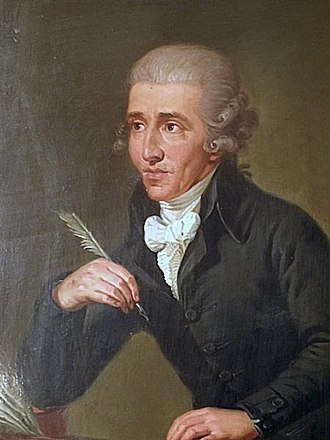Symphony No. 45 (Haydn)
Joseph Haydn's Symphony No. 45 is a symphony that was written in 1772. It is also called the Farewell symphony.
History
Haydn was working for Prince Nikolaus I, Prince Esterházy when he wrote the symphony. He stayed in Eszterháza, a palace in Hungary. Often, he had to stay there for a long time. The musicians who worked the prince wanted to go home. They wanted to see their families. They asked Haydn to help them. So, Haydn wrote the Farewell symphony. In the fourth movement, the musicians blew out a candle and left one by one. In the end, only Haydn and Luigi Tomasini stayed. They played the violin. This was meant to be a message to the prince. The musicians wanted to leave. The prince understood the message. So, they left Eszterháza the next day. [1]
Music
The symphony is written in the key of F-sharp minor. This symphony is the only symphony to be written in F-sharp minor from the 18th century.[2] The opening of the first movement is written in the Sturm und Drang style. The second movement's tempo is adagio. The third movement is a minuet. The fourth movement starts with the tempo of presto. However, in the second half of the movement, the tempo becomes adagio.[3]
References
- ↑ Landon, Howard Chandler Robbins (1955). The Symphonies of Joseph Haydn. Macmillan. p. 338.
- ↑ Riley, Matthew (2014). The Viennese Minor-Key Symphony in the Age of Haydn and Mozart. Oxford University Press. pp. 167–171. ISBN 978-0-19-934968-5.
- ↑ Landon, Howard Chandler Robbins (1966). Haydn Symphonies. London: British Broadcasting Corporation. p. 27. ISBN 978-0-563-06785-6.
